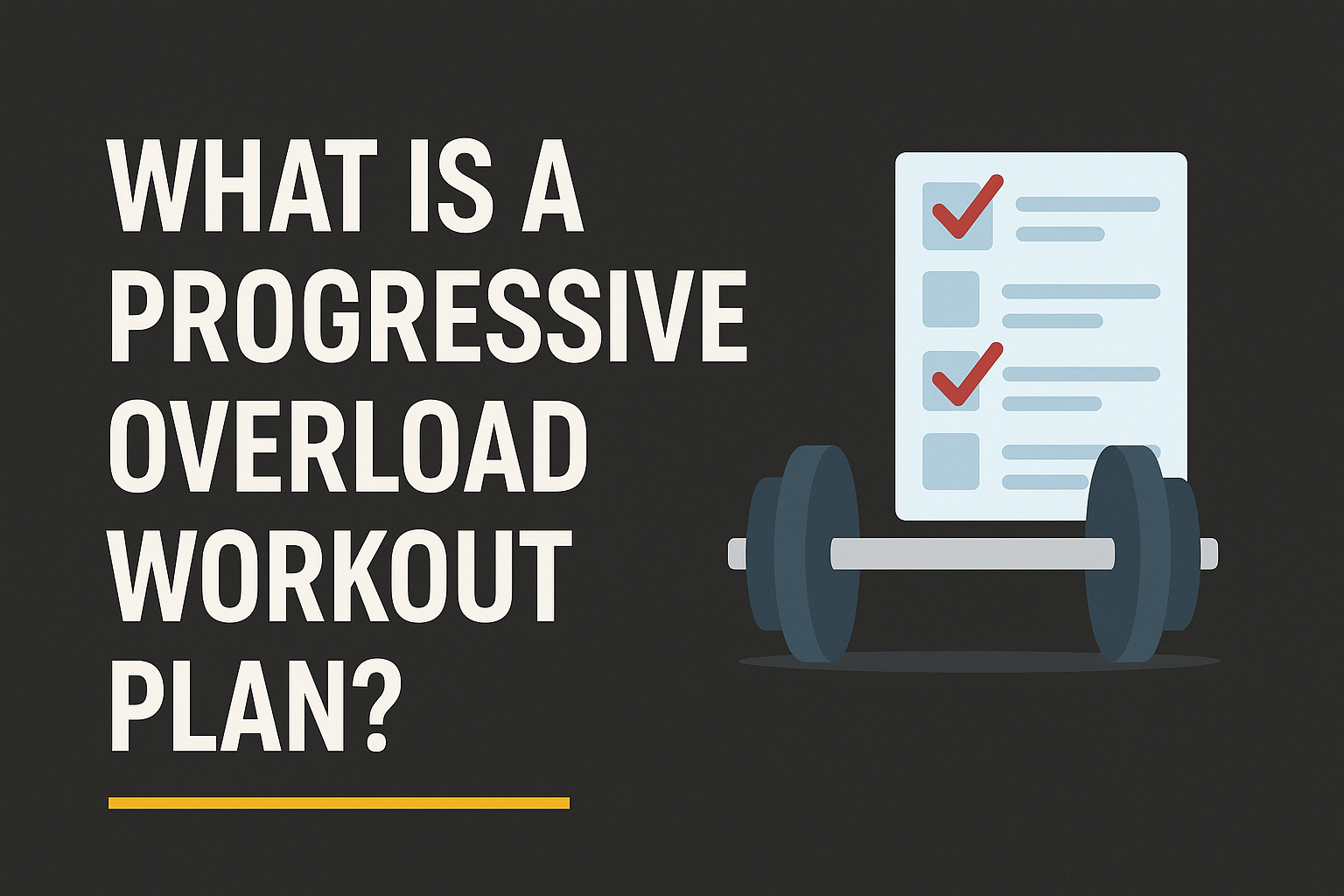Unlock Consistent Strength Gains and Muscle Growth
Have you ever wondered how people continuously get stronger, build more muscle, or improve endurance over time — without hitting a plateau? The answer lies in one key training principle: progressive overload. It’s one of the most effective strategies in fitness, whether you’re lifting weights, running, or doing bodyweight exercises.
In this blog post, we’ll break down what progressive overload really means, how it works, and how you can create a workout plan around it to see steady and long-lasting results.
🧠 What Is Progressive Overload?
Progressive overload is the gradual increase of stress placed on the body during exercise. This stress forces your body to adapt, becoming stronger, faster, or more resilient. Without it, your body gets used to the same movements and intensity — and progress stalls.
Think of it this way: if you keep lifting the same weight for the same number of reps for weeks on end, your muscles won’t have any reason to grow or get stronger. But if you increase the challenge gradually, your body keeps adapting to meet the new demand.
🧬 Why Progressive Overload Works
Your body is incredibly smart. It adapts to the demands you place on it. When you apply progressive overload, you’re essentially telling your body:
“This is getting harder — better get stronger!”
That’s why this principle is used in nearly every strength, hypertrophy (muscle-building), and performance program. It works by triggering:
- Muscle growth (hypertrophy)
- Increased strength and power
- Greater endurance and stamina
- Improved joint and tendon resilience
💪 5 Ways to Apply Progressive Overload
You don’t need to lift heavier every single workout. There are multiple ways to overload your muscles and progress:
1. Increase Weight
The classic method: lift more. Go up in weight once the current one feels too easy.
Example: Moving from 15 lb dumbbells to 20 lb dumbbells after a few weeks.
2. Increase Reps
Instead of lifting heavier, do more reps with the same weight.
Example: Week 1: 3 sets of 8 reps → Week 2: 3 sets of 10 reps.
3. Increase Sets
Add another set to your usual number to increase total training volume.
Example: 3 sets of squats becomes 4 sets.
4. Reduce Rest Time
Less rest = higher intensity, especially in cardio or circuit training.
Example: Resting 60 seconds between sets instead of 90.
5. Improve Technique or Range of Motion
Better form means more efficient muscle engagement — a subtle but important overload.
Example: Going deeper in squats or holding a plank with better alignment.
📅 How to Structure a Progressive Overload Workout Plan
A progressive overload plan isn’t just about pushing harder randomly — it’s about planned, measurable growth. Here’s how to structure a basic 4-week cycle:
🗓 Week 1: Establish Your Baseline
- Focus on learning proper form
- Record your weights, reps, and sets
- Don’t rush — start with moderate intensity
🗓 Week 2: Small Increases
- Add 1–2 more reps or a slight weight increase
- Keep rest and form consistent
🗓 Week 3: Push Volume
- Add another set or reduce rest
- Check if your body is adapting — more energy, better lifts, easier sets
🗓 Week 4: Deload or Active Recovery
- Scale back slightly to allow recovery
- Focus on mobility, stretching, and lighter movements
- This prevents burnout and prepares you for another strong cycle
🧱 Example: Progressive Overload Plan for Beginners (Strength Training)
| Week | Exercise (Squat) | Sets x Reps | Weight | Rest |
|---|---|---|---|---|
| 1 | Bodyweight Squat | 3×10 | 0 lbs | 60s |
| 2 | Goblet Squat | 3×10 | 15 lbs | 60s |
| 3 | Goblet Squat | 4×10 | 20 lbs | 45s |
| 4 | Goblet Squat | 3×8 | 15 lbs | 90s (Deload) |
You can apply the same logic to push-ups, lunges, planks, deadlifts, or even cardio workouts.
⚠️ Common Mistakes to Avoid
- Overloading too fast: Bigger jumps = higher injury risk
- Ignoring form: Always prioritize good technique over heavy weights
- No tracking: If you’re not logging your workouts, it’s hard to know what’s working
- No recovery: Muscles grow during rest — not while training. Don’t skip sleep, food, or rest days
✅ Final Thoughts: Build Smarter, Not Just Harder
Progressive overload is a smart, science-backed way to train your body. You don’t have to go beast mode every day. Instead, commit to small, consistent improvements each week — and those will compound into serious strength, muscle, and confidence over time.
If you’re stuck in a rut or just starting out, adopting a progressive overload workout plan might be the game-changer you’ve been looking for.
